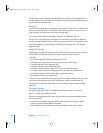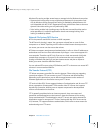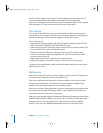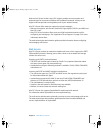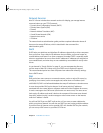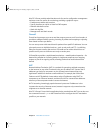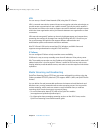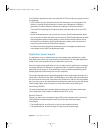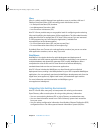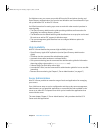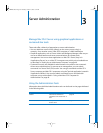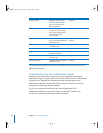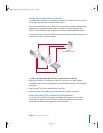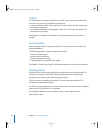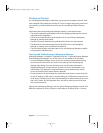
44 Chapter 2 Inside Mac OS X Server
JBoss
JBoss is a widely used full-featured Java application server. It provides a full Java 2
Platform, Enterprise Edition (J2EE) technology stack with features such as:
• An Enterprise Java Bean (EJB) container
• Java Management Extensions (JMX)
• Java Connector Architecture (JCA)
Mac OS X Server provides easy-to-use graphical tools for configuring and monitoring
JBoss and simplifying the deployment of JBoss applications. The JBoss administration
guide describes how to manage Mac OS X Server’s JBoss server. If you are interested
in J2EE programming, see “Java Enterprise Applications,” available from
www.apple.com/server/documentation/.
• For more information about J2EE, see java.sun.com/j2ee/.
• For more information about JBoss, see www.jboss.org/.
By default, JBoss uses Tomcat as its web application container, but you can use other
web application containers, such as Jetty, if you wish.
WebObjects
WebObjects is the Apple solution for rapid development and deployment of
ecommerce and other Internet applications. WebObjects applications can connect to
multiple databases and dynamically generate HTML content. WebObjects offers a
comprehensive suite of tools and run-time libraries that facilitate developing
standards-based web services and Java server applications.
Mac OS X Server includes the WebObjects run-time libraries and an unlimited
deployment license, making it the ideal platform for your J2EE-compatible WebObjects
applications. You can optionally purchase the WebObjects development tools from the
Apple Store (store.apple.com), Apple’s retail stores, and authorized Apple resellers.
For more information and documentation on WebObjects, go to
www.apple.com/webobjects/.
Integrating Into Existing Environments
Mac OS X Server offers many ways to interoperate with existing environments.
Open Directory offers several options for using existing directory information:
• You can use an existing Kerberos KDC or Active Directory to authenticate users.
• You can share information stored in an LDAPv3 directory system that’s accessible
from your server.
• You can retrieve configuration information from Berkeley Software Distribution (BSD)
configuration files or Sun Microsystems Network Information System (NIS) files.
LL2343.Book Page 44 Thursday, August 14, 2003 5:12 PM



